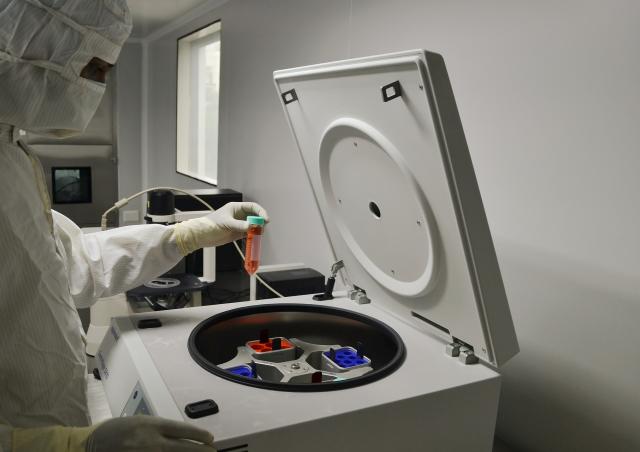How do cells respond to the environment?
2D substrates of controlled rigidity in polyacrylamide (PAA) or elastomer (PDMS) and functionalized with adhesion molecules mimic the physical environment of cells as close as possible to the physiological conditions of the organ from which they originate.
The stiffness range extends from 0.5-1kPa to 100 kPa for polyacrylamide gels. The PDMS rather applies to strong rigidities (up to MPa).
These two types of substrates must be functionalized in order to allow cell attachment and spreading. The adhesion molecules such as fibronectin, collagen, vitronectin… will be chosen according to the cells studied. After seeding the cells, various parameters can be studied: spreading, shape of cells, migration of individual cells or collective migration, sub-cellular localization of markers of interest in living cells or after fixation with acquisition in white light or in fluorescence.

What intracellular organization and cell behavior under shape constraint?
These two different questions from the point of view of their scientific objective lead to the same technical problem. Unlike the homogeneous functionalization described above, the solution here will be to carry out a selective functionalization of the substrate, i.e. of very defined shapes and areas. This will be achieved by micro-printing of adhesion molecules in order to draw shapes such as squares, straight or broken lines ... The micro-printing is developed in collaboration with Fabienne Régnier (Clotilde Randriamampita's team) and uses two techniques: by "ink pad" (Figure 1) and by "deep UV" (Figure 2). Figure 3 illustrates two examples of microprinting applications.


What forces do cells develop?
In order to ensure their mobility (migration of individual cells or collective migration), cells rely on their environment / culture substrate to propel themselves thanks to the forces that their cytoskeleton deploys. The measurement of these forces by the technique of Traction Force Microscopy (TFM) is evaluated by following the deformation of the polyacrylamide (PAA) substrates, under the cells. The PAA is distorted as when a hand on a sheet of paper crumples it slightly or, to choose another comparison in athletics, when the athlete's shoe distorts the tartan of the track with each impulse. The deformation is measured by following the movement of fluorescent beads present in the PAA gel. The displacement of the beads in the presence of cells will be calculated by an algorithm applied to the images acquired. The calculation of the forces is obtained by taking into account the physical parameters of the gel, in particular its rigidity (Figures 1 and 2).


How do cells respond to the modulation of the environment?
During development as during adult, physiological and pathological life, cells migrate and are subject to the influence of tissues whose mechanical properties may be different. The cells will therefore have to adapt and respond in an adequate and coordinated manner to the stimuli they perceive. These stimuli can facilitate the prior initiation of a behavior or, on the contrary, inhibit it. To study the response of cells to variations in the mechanical properties of their environment (durotaxis), polyacrylamide gels whose stiffness exhibits a gradient whose amplitude can be determined by the user are used as a substrate for cell culture. Various criteria could be studied, for example the differences in cell spreading and shape but especially migration.








